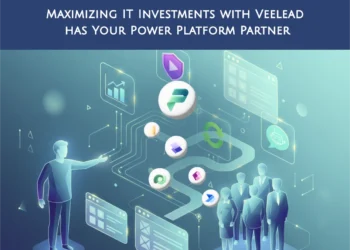The Goods and Services Tax (GST) system, implemented in India on July 1, 2017, revolutionized the country’s tax structure by consolidating multiple indirect taxes into a single unified structure. Businesses now have streamlined tax compliance and a simplified tax filing system. However, within the GST framework, taxpayers face important decisions that can significantly impact their compliance processes and overall costs. Two such notable components of GST are the GST Composition Scheme and the Reverse Charge Mechanism in GST. Understanding the differences between these two aspects and knowing how to choose between them can empower businesses to make informed decisions while minimizing administrative burdens.
In this article, we’ll provide a comprehensive guide on how to choose between the GST Composition Scheme and the Reverse Charge Mechanism, exploring their features, advantages, disadvantages, and applications.
What is the GST Composition Scheme?
The GST Composition Scheme is a compliance simplification strategy designed for small taxpayers. It enables eligible businesses to pay GST at fixed, lower rates rather than the standard GST rates, with reduced reporting obligations. The scheme is ideal for small businesses, manufacturers, and restaurants that are not involved in interstate supplies or dealing with exempt goods.
Under this scheme, taxpayers are required to file quarterly returns instead of monthly returns, making it suitable for businesses with limited resources to manage detailed compliance. However, taxpayers under the composition scheme cannot claim Input Tax Credit (ITC) on their purchases, which means that they are fully responsible for taxes paid on raw materials and services consumed.
Eligibility Criteria for the GST Composition Scheme
Before considering this scheme, businesses need to verify whether they meet the eligibility requirements. Some key criteria include:
- Turnover Limit: Businesses with an annual turnover of up to ₹1.5 crore (₹75 lakh for states in the northeastern region and Himachal Pradesh) are eligible for the GST Composition Scheme.
- Restrictions on Interstate Supply: The scheme is applicable only to businesses operating within one state; interstate supply of goods is not allowed under this provision.
- Exclusions: Certain services, like e-commerce operators and non-resident taxable persons, are excluded from this scheme.
- Goods Coverage: Taxpayers cannot opt for the composition scheme if they deal in goods like alcohol, tobacco, and other items explicitly excluded by the GST Council.
Advantages of the GST Composition Scheme
- Simplified Taxation: One of the most notable benefits is reduced tax rates and simplified compliance, including quarterly returns.
- Lower Costs: Lower GST rates allow small businesses to maintain affordability and competitive pricing.
- Ease of Filing: Since quarterly filings and minimal documentation are required, the scheme significantly reduces overhead costs for tax compliance.
Disadvantages of the GST Composition Scheme
- No Input Tax Credit: Taxpayers under this scheme cannot claim ITC, which can increase the cost of sourcing goods and services.
- Limited Scope of Business: Businesses engaged in interstate trade or providing services other than restaurant services are excluded from opting for this scheme.
- Disclosing Tax Liability Separately: The GST Composition Scheme requires businesses to explicitly mention that the taxpayer is not entitled to charge GST separately from customers, which may affect customer perception.
What is the Reverse Charge Mechanism in GST?
The Reverse Charge Mechanism in GST shifts the tax liability from the seller to the buyer in certain transactions. Under normal circumstances, sellers collect GST from buyers and remit it to the government. However, in specific cases, the GST law mandates the recipient of goods or services (i.e., the buyer or service recipient) to pay GST directly to the government rather than relying on the supplier.
The reverse charge mechanism is applicable in scenarios involving:
- Purchase from Unregistered Suppliers: If a registered taxpayer purchases goods or services from an unregistered supplier, the buyer is liable to pay GST under the reverse charge mechanism.
- Specified Goods and Services: The GST Council has identified specific goods and services for which reverse charge applies, such as imports, legal services, and transportation of goods via road.
- Foreign Companies or Agencies: Transactions involving foreign entities supplying goods or services to Indian recipients often trigger reverse charge liabilities.
Advantages of Reverse Charge Mechanism in GST
- Compliance with Unregistered Dealers: The reverse charge mechanism ensures GST compliance for transactions with unregistered suppliers.
- Better Tax Control: By holding the buyer accountable for tax payments in specific transactions, the government ensures better tax collection control.
- Applicability to Imports: The mechanism is particularly beneficial in ensuring that imports are taxed appropriately, thereby leveling the playing field between domestic and foreign suppliers.
Disadvantages of Reverse Charge Mechanism in GST
- Complex Reporting Requirements: Buyers must keep meticulous records of reverse charge transactions and report them during GST return filing.
- Increased Compliance Burden: Businesses may face higher administrative costs to ensure compliance with reverse charge obligations.
- Critical Cash Flow Considerations: Buyers must manage cash flow optimally as they are directly liable for GST payments under reverse charge, which could entail immediate tax liabilities.
GST Composition Scheme vs. Reverse Charge Mechanism: A Detailed Comparison
While both the GST Composition Scheme and the Reverse Charge Mechanism serve distinct purposes, their implications for businesses can impact tax obligations, operational flexibility, and compliance requirements. Below is a comparative analysis:
| Parameter | GST Composition Scheme | Reverse Charge Mechanism in GST |
| Compliance Level | Designed for small businesses with limited reporting obligations. | Requires meticulous reporting and record-keeping by the buyer. |
| Eligibility Criteria | Turnover-based; limited to intra-state businesses. | Applies to specified transactions and purchases from unregistered suppliers. |
| Taxpayer | Seller is responsible for reduced GST payments. | Buyer is responsible for paying GST directly to the government. |
| Input Tax Credit (ITC) | Not applicable; input tax credit cannot be claimed. | ITC can be claimed once GST is paid under reverse charge. |
| Applicability to Services | Limited applicability; generally used by goods manufacturers and restaurants. | Applicable to specified services, such as legal services, import services, etc. |
| Turnover-Based Limitation | Turnover capped at ₹1.5 crore annually. | No turnover limit for applicability; based on transaction type. |
| Impact on Cash Flow | Reduced tax liability, which positively affects cash flow. | Requires upfront payment of GST, potentially straining cash flow. |
Key Factors to Consider When Choosing Between the GST Composition Scheme and Reverse Charge
Making the right choice between the GST Composition Scheme and the Reverse Charge Mechanism depends on your business type, turnover, and the nature of your transactions. Below are crucial factors to consider.
1. Turnover
- Small businesses with annual turnovers less than ₹1.5 crore may benefit significantly from the GST Composition Scheme because of its lower tax rates and simplified compliance.
- The Reverse Charge Mechanism under GST can apply regardless of turnover. It is driven by the type of transaction rather than total sales.
2. Scope of Business
- If your business operates solely within one state and does not engage in interstate commerce, you may find the GST Composition Scheme more fitting.
- Businesses dealing with unregistered suppliers, imports, or specified goods/services will need to consider the Reverse Charge Mechanism, even if the GST Composition Scheme is selected.
3. Input Tax Credit
- If ITC is critical to your business, the Reverse Charge Mechanism may offer better opportunities. This is because ITC can be claimed under reverse charge once GST is paid to the government. On the other hand, businesses under the GST Composition Scheme cannot avail of ITC.
4. Type of Goods and Services
- Businesses selling exempted goods or dealing in services that are excluded from the GST Composition Scheme must rely on regular GST compliance and may encounter reverse charge elements as applicable.
- Service businesses frequently engage with reverse charge provisions, such as legal and consultancy services.
5. Administrative Capability
- Businesses with limited resources to manage tax compliance may favor the GST Composition Scheme due to reduced reporting obligations.
- Conversely, businesses with robust administrative support can handle the more intensive reporting requirements associated with the Reverse Charge Mechanism.
6. Transaction Type
- Review all transactions to ascertain whether reverse charge is triggered. If your business frequently deals with unregistered suppliers or imports, reverse charge would apply.
- Evaluate whether most of your transactions fall within the turnover limits and eligibility parameters of the GST Composition Scheme.
Practical Scenarios of Choosing Between Composition Scheme and Reverse Charge
Scenario 1: Small Manufacturer with Intra-State Operations
If a small manufacturer only conducts intra-state trade with an annual turnover below ₹1.5 crore, opting for the GST Composition Scheme may simplify compliance and reduce tax liability. However, if they source raw materials from unregistered suppliers, then the Reverse Charge Mechanism will apply in those transactions.
Scenario 2: E-commerce Operator Dealing in Interstate Supply
An e-commerce operator cannot opt for the GST Composition Scheme due to ineligibility. The operator may instead need to comply with regular GST filing and apply reverse charge wherever applicable, such as for specific goods or logistics services.
Scenario 3: Importer of Raw Materials
An importer of raw materials triggering the reverse charge mechanism will benefit from claiming Input Tax Credit against reverse charge payments. This arrangement can make the Reverse Charge Mechanism advantageous despite its cash flow implications.
How to Transition Between GST Schemes
Taxpayers can switch between GST schemes and regular GST compliance based on eligibility and business needs. Here’s a quick guide:
- Opting into the GST Composition Scheme: Eligible taxpayers can choose the Composition Scheme by filing the requisite declaration in Form GST CMP-02 at the beginning of a financial year.
- Exiting the Composition Scheme: If turnover exceeds ₹1.5 crore or other ineligibility criteria arise, taxpayers must transition to regular GST compliance. Filing Form GST CMP-04 lets the taxpayer exit the scheme.
- Reverse Charge Compliance: Reverse charge transactions must be reported in GST returns, whether the taxpayer is under the regular GST scheme or the Composition Scheme.
Which Scheme is Best for Your Business?
The choice between the GST Composition Scheme and the Reverse Charge Mechanism in GST often hinges on your business type, turnover, and transaction profile. If your enterprise falls within the turnover limits for the Composition Scheme and operates within one state without engaging in exempt services, the scheme may save compliance costs. For businesses with unregistered suppliers, imports, or specified transaction types, reverse charge compliance will need to be integrated into GST filings regardless of your chosen scheme.
Ultimately, businesses must evaluate their nature of operations, cash flow requirements, and eligibility conditions to make an effective choice. By understanding both components and their implications, you can optimize your compliance strategy under GST and focus on growing your business.
Conclusion
Navigating the GST framework can appear challenging, especially with decisions like opting for the GST Composition Scheme or understanding the Reverse Charge Mechanism in GST. However, both mechanisms serve specific purposes tailored to different business profiles. Small businesses enjoy simplicity and lower tax rates under the Composition Scheme, while reverse charge compliance ensures tax processes for specific transactions and unregistered suppliers are streamlined.
Businesses should carefully assess their eligibility criteria, transaction types, and financial goals to determine which scheme best aligns with their needs. Consulting a tax advisor or GST expert can further help refine your decision and ensure seamless compliance. Whether you choose the Composition Scheme or focus on managing reverse charge transactions, maintaining clarity and compliance can pave the way for sustained growth in a GST-enabled economy.















